Text
What dietary regimen promotes the best health outcomes for dogs?
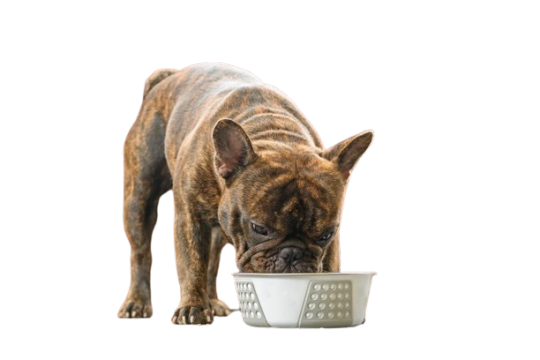
The healthiest diet for a dog typically consists of high-quality, balanced nutrition that meets their specific dietary needs. Here are some key components of a healthy dog diet:
High-quality commercial dog food: Look for brands that use real meat as the primary ingredient and avoid those with fillers, by-products, and artificial additives. Choose a food formulated for your dog's life stage (puppy, adult, senior) and size.
Proper balance of nutrients: Dogs require a balance of protein, carbohydrates, fats, vitamins, and minerals. The specific ratios may vary depending on factors such as age, breed, and activity level.
Fresh water: Always ensure your dog has access to clean, fresh water at all times. Hydration is crucial for overall health.
Portion control: Avoid overfeeding your dog, as obesity can lead to various health problems. Follow feeding guidelines provided by the food manufacturer and adjust portions based on your dog's individual needs.
Variety: Incorporate variety into your dog's diet by offering different types of protein sources (e.g., chicken, beef, fish) and vegetables (e.g., carrots, green beans) as treats or meal toppers, unless your veterinarian advises otherwise.
Limit treats and table scraps: While treats can be a part of your dog's diet, they should be given in moderation to prevent weight gain and nutritional imbalances. Avoid feeding your dog table scraps, as human food may not be suitable for dogs and can cause digestive issues.
Considerations for special dietary needs: Some dogs may have special dietary requirements due to allergies, sensitivities, or medical conditions. In such cases, your veterinarian may recommend a specialized diet or dietary supplements.
Avoid harmful foods: Certain foods can be toxic or harmful to dogs, including chocolate, grapes, raisins, onions, garlic, and xylitol (a sugar substitute). Make sure to keep these foods out of your dog's reach. Here are some examples of high-quality commercial dog food brands known for using quality ingredients and producing nutritionally balanced products:
Here are some examples of high-quality commercial dog food brands known for using quality ingredients and producing nutritionally balanced products:
Royal Canin: Royal Canin offers a wide range of breed-specific and life stage-specific formulas tailored to meet the unique nutritional needs of dogs. They use high-quality proteins, carbohydrates, and vitamins in their recipes.
Hill's Science Diet: Hill's Science Diet provides a variety of formulas developed by veterinarians and nutritionists to support dogs' specific health needs, including weight management, sensitive stomachs, and joint health.
Blue Buffalo: Blue Buffalo offers natural dog food made with real meat as the first ingredient, along with wholesome grains, fruits, and vegetables. They have formulas for puppies, adults, and seniors, as well as grain-free options.
Merrick: Merrick's recipes feature real deboned meat, fish, or poultry as the main ingredient, along with whole grains, fruits, and vegetables. They offer grain-free options and formulas tailored for different life stages and breed sizes.
Orijen: Orijen is known for its biologically appropriate dog food made with high-quality, fresh ingredients, including free-run poultry, wild-caught fish, and cage-free eggs. Their recipes are rich in protein and mimic a dog's natural diet.
Wellness: Wellness dog food uses quality proteins, whole grains, and nutrient-rich fruits and vegetables to create balanced and flavorful recipes. They offer formulas for various life stages and dietary needs, including grain-free and limited ingredient options.
Taste of the Wild: Taste of the Wild offers grain-free dog food inspired by the ancestral diet of wild canines. Their recipes feature novel protein sources such as bison, venison, and wild boar, along with fruits, vegetables, and probiotics for digestive health.
Acana: Acana produces biologically appropriate dog food made with fresh, regional ingredients sourced from trusted suppliers. Their recipes feature a high meat content and are free of artificial additives and preservatives.
0 notes
Text
Maintaining the Well-being of French Bulldogs: Understanding and Addressing Common Health Issues
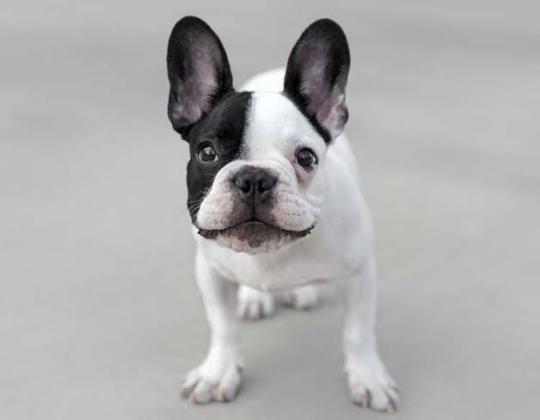
French Bulldogs, cherished for their adorable appearance and affectionate nature, are indeed delightful companions. However, prospective owners should be well-informed about the health challenges commonly associated with this breed.
A primary concern for French Bulldogs is brachycephalic syndrome, a condition arising from their distinctive short, flat faces. This anatomical feature often leads to respiratory issues as their airways are compressed, making breathing more challenging.
The compromised air passages can result in snoring, wheezing, and, in severe cases, respiratory distress. Additionally, their susceptibility to overheating due to their constricted airways makes them more prone to heatstroke, especially in hot climates or during vigorous exercise.
Their endearing wrinkles and skin folds, while adding to their charm, require diligent maintenance. These folds can trap moisture and debris, creating an environment conducive to skin infections and irritation.
Regular cleaning and drying of these areas are essential to prevent dermatological problems such as fold dermatitis and bacterial or fungal infections.
French Bulldogs are also predisposed to joint issues, notably hip dysplasia and patellar luxation. Hip dysplasia occurs when the hip joint develops abnormally, leading to discomfort and impaired mobility.
Similarly, patellar luxation involves the kneecap slipping out of place, causing pain and lameness. Both conditions can significantly impact the dog's quality of life and may necessitate medical intervention, including medication or surgical procedures.
Their large, expressive eyes are another area of concern. French Bulldogs are prone to various eye conditions, including cherry eye, a condition where the gland in the third eyelid protrudes, causing discomfort and potential complications.
Additionally, they may suffer from hereditary eye disorders such as cataracts and progressive retinal atrophy, which can impair vision and require specialized care.
Dental health is another important aspect of French Bulldog care. Their compact jaw structure often leads to dental issues such as overcrowding, misalignment, and an increased risk of periodontal disease.
Regular dental care, including tooth brushing and providing appropriate chew toys, is vital to maintaining oral health and preventing dental problems.
Furthermore, French Bulldogs can develop allergies, either to certain foods or environmental factors. Allergic reactions can manifest as itching, skin irritation, and gastrointestinal disturbances.
Identifying and managing these allergies through dietary adjustments or environmental modifications is crucial for the dog's well-being.
Despite these health challenges, French Bulldogs can lead fulfilling lives with proper care and attention.
Regular veterinary check-ups, a balanced diet tailored to their nutritional needs, adequate exercise, and preventive measures can help mitigate health risks and ensure a happy and healthy companion.
When considering acquiring a French Bulldog, it is imperative to choose a reputable breeder who prioritizes health and ethical breeding practices.
Responsible breeding can help reduce the incidence of hereditary health issues and promote the overall well-being of these beloved pets.
0 notes
Text
What health issues can affect your French Bulldog?

French Bulldogs, cherished for their charm and companionship, are prone to specific health concerns, much like any other breed. Here's an overview of common health issues that French Bulldogs may encounter:
Brachycephalic Syndrome: Their flat faces and narrow nostrils can lead to breathing difficulties, particularly in hot or humid conditions, resulting in respiratory distress.
Skin Fold Infections: The folds on their face and body can trap moisture and bacteria, potentially causing skin fold infections if not kept clean and dry.
Joint Problems: French Bulldogs may suffer from hip dysplasia and patellar luxation, leading to discomfort and mobility issues if untreated.
Allergies: Environmental factors like pollen, dust, or certain foods can trigger allergies in Frenchies, manifesting as itching, redness, or ear infections.
Eye Conditions: They are susceptible to various eye issues, including cherry eye, dry eye, and cataracts.
Obesity: Their inclination to overeat combined with a tendency to gain weight easily puts French Bulldogs at risk of obesity, which can lead to diabetes, joint problems, and heart disease.
Heat Sensitivity: Difficulty regulating body temperature makes them prone to heatstroke, emphasizing the importance of keeping them cool and hydrated, especially in warmer weather.
Digestive Problems: Some may experience flatulence, diarrhoea, or food sensitivities, necessitating a balanced diet and avoidance of table scraps.
Dental Concerns: Periodontal disease and tooth decay are common dental issues, underscoring the need for regular dental care.
To ensure the well-being of your French Bulldog, it's vital to stay vigilant of these potential health issues and collaborate closely with your veterinarian. Regular check-ups, a balanced diet, adequate exercise, and attentive care are essential for their overall health and happiness.
0 notes
Text
How can I alleviate symptoms of a cat allergy?

Here's a detailed plan to help you manage your symptoms effectively:
Avoid Exposure: Stay away from places where cats are present and limit your time around them.
Create Safe Spaces: Designate certain areas in your home as cat-free zones, especially where you spend a lot of time.
Maintain Cleanliness: Regularly clean your home to remove cat dander, including vacuuming, dusting, and mopping.
Invest in Air Quality: Consider using an air purifier with a HEPA filter to reduce allergens in your home.
Wash Bedding: Wash your bedding and upholstery frequently in hot water to eliminate allergens.
Protect Your Bed: Cover mattresses and pillows with allergen-proof covers to prevent dander accumulation.
Medication Options: Explore over-the-counter or prescription allergy medications to manage symptoms like sneezing and itching.
Consider Immunotherapy: Allergy shots may be recommended by a doctor for long-term management of severe allergies.
Finding the right approach may take time. Be patient and persistent in your efforts to reduce your symptoms.
0 notes
Text
What are the common causes of a dog having an itchy bum?
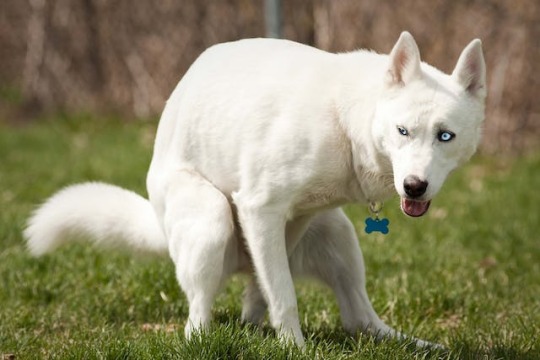
It's important to understand why your dog might be feeling uncomfortable. Itchy bums in dogs can be caused by several things. Let me break it down for you:
Anal Gland Issues: Dogs have small scent glands near their bottoms called anal glands. Sometimes these glands can get blocked or infected, causing itching and discomfort for your furry friend.
Allergies: Just like people, dogs can have allergies too! They might be allergic to things like certain foods, pollen, or even fleas. When a dog has an allergic reaction, it can make their skin itchy all over, including their bum.
Parasites: Nasty little critters like fleas, mites, or worms can make themselves at home around a dog's bum area. When these parasites start biting or laying eggs, it can lead to intense itching and irritation.
Skin Infections: Sometimes, dogs can develop bacterial or fungal infections on their skin, including around their bum. These infections can make the skin red, sore, and very itchy.
Poor Diet: Believe it or not, what your dog eats can affect their skin health. If their diet lacks essential nutrients or if they're sensitive to certain ingredients, it could lead to skin problems and, you guessed it, an itchy bum.
Hygiene Issues: Keeping clean is important for dogs too! If their bum area isn't kept clean and dry, it can become a breeding ground for bacteria and yeast, causing itchiness and discomfort.
Stress or Anxiety: Just like stress can make us humans feel itchy or uncomfortable, it can have similar effects on dogs. Stress or anxiety might manifest in behaviours like excessive licking or chewing around the bum area.
If you notice your dog scooting their bottom on the floor, licking or biting at their bum, or showing signs of discomfort, it's essential to figure out the cause and address it promptly.
A trip to the vet can help pinpoint the exact reason behind your dog's itchy bum and get them the appropriate treatment they need to feel better.
0 notes
Text
Unlocking the Secret to French Bulldog Nutrition: Discover the Best Dog Food Picks!
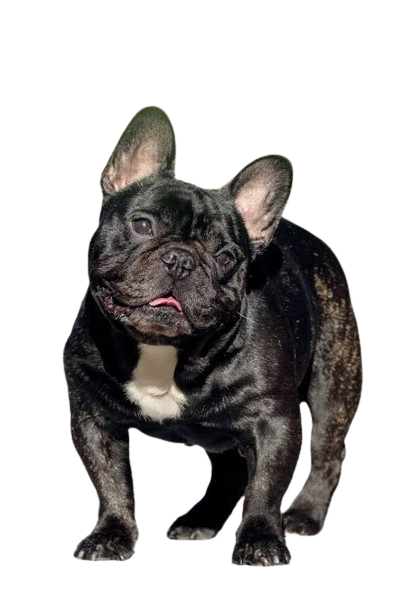
Dive into the world of French Bulldog nutrition with our comprehensive guide to the best dog food options tailored specifically for this beloved breed.
From ingredient analysis to nutritional tips, we've got everything you need to ensure your furry friend thrives.
Don't miss out on giving your French Bulldog the diet they deserve! Click to explore more.
0 notes
Text
Can pregnancy cause a cat allergy?

Pregnancy itself does not cause cat allergies. However, changes in the body during pregnancy can potentially affect a person's immune response, which could lead to changes in existing allergies or even the development of new ones.
Allergies are the result of an overactive immune system. When the body encounters a substance it considers harmful, such as cat dander, it reacts by producing antibodies to fight off the perceived threat. This reaction can cause symptoms like sneezing, itching, and a runny nose.
During pregnancy, the body undergoes significant hormonal changes. These changes can affect the immune system and potentially alter how it responds to allergens. Some people may find that their allergy symptoms worsen, stay the same, or even improve during pregnancy.
In some cases, people may experience allergy-like symptoms for the first time during pregnancy. However, these symptoms could also be due to other factors related to pregnancy, such as increased blood flow causing nasal congestion.
It's also important to note that while a pregnant person's immune response may change, there's no evidence to suggest that these changes will directly affect the fetus in terms of developing allergies.
If you're pregnant and notice new or changing allergy symptoms, it's a good idea to talk to your doctor. They can help determine the cause of your symptoms and suggest safe treatments.
3 notes
·
View notes
Text
What are some ways to get rid of hairballs in cats?

Hairballs are clumps of hair that cats swallow while grooming themselves. Sometimes, these hairballs can get stuck in their stomach or intestines, which can be uncomfortable for them. Here are some simple ways to help your cat with this issue:
Brush your cat regularly: Brushing your cat every day can help remove loose hair. This means there's less hair for your cat to swallow, which can reduce the chance of hairballs forming.
Use hairball control products: There are special products like gels and pastes that can help hairballs pass through your cat's digestive system more easily. These products, such as Laxatone, act as lubricants and can be given to your cat a few times a week.
Change their diet: Some cat foods are specially formulated to help prevent hairballs. They often contain more fiber, which can help move hair through the digestive system. Adding fiber to your cat's diet can also be done by giving them treats or nutritional supplements.
Keep your cat hydrated: Making sure your cat drinks enough water can also help keep their digestive system working well and may help prevent hairballs.
Remember, it's normal for cats to have hairballs from time to time, but if it's happening a lot, it could be a sign of other health issues. So, it's always a good idea to keep an eye on your cat and consult a vet if you're worried. I hope this helps, and let me know if you have any other questions about your pet's health!
1 note
·
View note
Text
What is the best hairball treatment for cats?

Hairballs in cats are usually a result of grooming habits. When cats groom themselves, they swallow hair which can accumulate in the stomach and form a hairball.
Hairball remedies for cats include commercial products, home remedies, and prevention methods.
Commercial products often contain petroleum jelly or mineral oil to help the hairball pass through the digestive system.
Home remedies can include adding fiber to the cat's diet or brushing the cat's fur regularly to reduce the amount of hair swallowed.
Prevention methods can include regular grooming and a diet high in fiber.
Most popular commercial products
One of the most popular commercial products for treating hairballs in cats is Laxatone. It is a gel that contains petroleum jelly, which helps to lubricate the digestive tract and allow the hairball to pass more easily. Other products include Feline Greenies Hairball Control treats and Nutri-Vet Hairball Paw-Gel for cats.
Home remedies
Home remedies for hairballs in cats can include adding canned pumpkin or a teaspoon of olive oil to the cat's food. Both of these can help to lubricate the digestive tract and allow the hairball to pass more easily. Regular brushing can also help to reduce the amount of hair that the cat swallows.
Prevention Tips
Prevention is the best method for dealing with hairballs in cats. This can include regular grooming to reduce the amount of hair that the cat swallows, and a diet high in fiber to help the hair pass through the digestive system more easily.
Some cat foods are specifically designed to help prevent hairballs, such as Hill's Science Diet Hairball Control cat food.
Hairballs can cause a variety of symptoms in cats, including vomiting, loss of appetite, and constipation.
If a cat is frequently vomiting hairballs or showing other signs of distress, it is important to consult with a veterinarian.
Prevention is often the best method for dealing with hairballs. Regular grooming can reduce the amount of hair that the cat swallows, and a diet high in fiber can help the hair pass through the digestive system more easily.
#my pets#pet#petblr#cats#cute animals#animals#pets#baby cat#breeding pet#hairballs#hairballprevention#trendycat
1 note
·
View note
Text
In what ways does a cat's diet influence a feline dealing with a urinary tract ailment?

Ever pondered the intricate connection between your cat's cuisine and their urinary tract health? 🐾 Let's delve deeper:
Hydration Haven: Opt for cat cuisine brimming with moisture to ensure your feline stays fabulously hydrated. Whether it's the sizzle of wet food or a splash of water on kibble, quenching that kitty thirst is key!
pH Harmony: Seek out cat food crafted to maintain that perfect pH balance in their urine. It's like a symphony for their urinary health, keeping everything melodiously in tune.
Mineral Mastery: Keep a watchful eye on minerals like magnesium and phosphorus; an excess can lead to the unwanted formation of crystals. Specialized cat foods act like mineral maestros, maintaining harmony in your kitty's urinary orchestra.
Protein Prowess: Choose cat victuals with premium meat as the star of the show. It's like a gourmet feast for your feline, providing essential nutrients without bombarding their urinary system.
Adieu to Irritants: Banish those pesky additives that might irritate your cat's delicate urinary tract. Opt for cat chow without unnecessary fillers – because your kitty deserves a VIP dining experience!
#cathealth#felinewellness#urinarytractcare#petnutrition#catdiet#catwellbeing#healthycats#petcaretips#catwellnesswednesday#pawsandwellness#culinarycare#pethealthmatters#nutritionforcats#felinefriends#vetapproveddiets#catsoftumblr#wellnessjourney#purrfecthealth#catsandnutrition#holisticpetcare
1 note
·
View note
Text
The Importance of a Balanced Diet for Cats and Dogs: Choosing the Right Food

Proper nutrition plays a crucial role in the health and well-being of our beloved pets. Cats and dogs, like humans, require a balanced diet to thrive.
In this article, we will explore the nutritional needs of cats and dogs, the significance of protein, carbohydrates, and fats in their diet, and provide recommendations for selecting high-quality pet foods or homemade diets.
Nutritional Needs of Cats and Dogs:
Both cats and dogs have unique dietary requirements that must be met to support their optimal health.
Cats are obligate carnivores, which means they have a higher requirement for animal-based protein compared to dogs.
Protein is essential for muscle development, maintaining a healthy coat, and overall growth.
Dogs, on the other hand, are omnivores and have a more flexible diet. They require a mix of protein, carbohydrates, and fats to meet their nutritional needs.
Carbohydrates provide energy, while fats play a vital role in hormone production, insulation, and the absorption of fat-soluble vitamins.
Importance of Protein, Carbohydrates, and Fats in Their Diet
Protein is the cornerstone of a cat or dog's diet as it provides essential amino acids necessary for the body's growth and repair processes.
High-quality animal-based protein sources such as chicken, turkey, fish, and eggs are recommended. Vegetarian or vegan diets are not suitable for cats as they lack certain essential nutrients.
Carbohydrates, derived from sources like whole grains, vegetables, and fruits, contribute to energy production and fiber content. However, carbohydrates should be fed in moderation to pets with specific health issues or sensitivities.
Fats are a concentrated source of energy and aid in nutrient absorption. Omega-3 and omega-6 fatty acids are beneficial for maintaining healthy skin, a shiny coat, and promoting a strong immune system. Sources of healthy fats include fish oil, flaxseed oil, and chicken fat.
Selecting High-Quality Pet Foods
When choosing commercial pet foods, look for brands that adhere to high-quality standards. Seek those that undergo rigorous testing, use superior ingredients, and have a robust quality control process.
It is vital to read the label for a clear and transparent list of ingredients, including named animal protein sources, whole grains, and limited filler ingredients.
To ensure that the food formulation meets or surpasses established nutritional guidelines, search for statements from the Association of American Feed Control Officials (AAFCO) on the packaging.
Homemade Diets
Homemade diets can be an alternative for pet owners who prefer complete control over their pets' nutrition. However, it is essential to consult with a veterinary nutritionist to ensure the diet is balanced and meets all the pet's nutritional requirements. They can provide personalized guidance and help create custom meal plans.
Conclusion:
A balanced diet is of utmost importance for the overall health and longevity of cats and dogs.
Providing the right levels of protein, carbohydrates, and fats is essential for their proper growth, development, and well-being.
1 note
·
View note
Text
Understanding Your Cat's Liver Disease: Nutrition and Care Guide
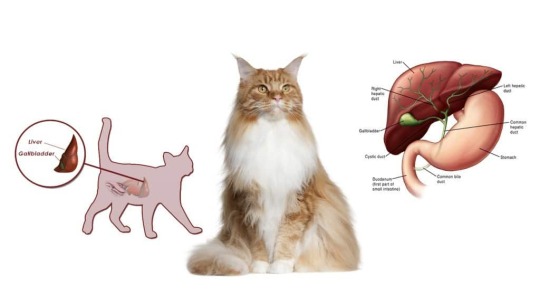
Adding salt to your cat's food is generally not recommended, especially if they have liver disease.
Excessive salt intake can put additional strain on the liver and kidneys, potentially worsening the condition.
High levels of salt can also lead to increased thirst and urinary issues in cats.
In cases of liver disease, it's crucial to focus on your cat's overall diet and nutrition.
Your veterinarian can recommend a specialized diet that is appropriate for your cat's specific needs.
These diets are formulated to support liver function and minimize the workload on the liver.
It's also important to ensure that your cat has access to fresh water at all times.
Staying hydrated is essential for supporting overall health, including liver function.
Furthermore, try to provide a stress-free environment for your cat. Stress can impact the immune system and exacerbate certain health conditions, including liver disease.
Creating a calm and quiet space for your cat can positively influence their well-being.
1 note
·
View note
Text
Essential Tips for First-Time Cat Owners
Introduction:
Bringing a furry feline friend into your home is an exciting and rewarding experience.
Cats make delightful companions, but being a first-time cat owner can be a bit overwhelming.
To ensure a smooth transition and a happy, healthy life for your new companion, we’ve compiled a comprehensive guide with essential tips for first-time cat owners.
From preparing the home to understanding their needs, this article will provide valuable insights to help you embark on this wonderful journey.
Preparing Your Home:
Before welcoming your new cat, make your home cat-friendly. Remove toxic plants, secure loose wires, and put away fragile objects.
Create a cozy space with a comfortable bed, scratching posts or boards, and interactive toys.
Consider designating a quiet area for your cat to retreat to when they need some alone time.
Proper Nutrition:
Provide a balanced and age-appropriate diet for your cat. Consult with your veterinarian to determine the right type and amount of food.
Avoid giving them human food, as certain ingredients can be harmful to cats. Fresh water should always be readily available.
Litter Box Essentials:
Choose a suitable litter box and place it in a quiet and accessible location. Use unscented litter and scoop it daily to maintain cleanliness.
Provide one litter box per cat plus an additional box. Introduce your cat to the litter box upon arrival and be patient as they become familiar with it.
Provide Scratching Surfaces:
Cats have a natural instinct to scratch. Prevent them from damaging furniture by providing appropriate scratching surfaces such as scratching posts or boards.
Place them strategically near their favourite spots and encourage their use by using catnip or Feliscratch (a synthetic feline scratching pheromone).
Regular Grooming:
Develop a grooming routine to keep your cat’s coat healthy. Brush them regularly to prevent matting and reduce shedding. Additionally, check their ears, teeth, and nails regularly.
Playtime and Enrichment:
Engage your cat in daily play sessions to keep them mentally and physically stimulated. Use interactive toys, laser pointers, or puzzle feeders to provide entertainment and exercise.
Enrich their environment with climbing trees, hiding spots, and window perches for them to observe the outside world.
Veterinary Care:
Schedule regular check-ups with a trusted veterinarian. Vaccinations, parasite prevention, and wellness exams are crucial for maintaining your cat’s health.
Establish a relationship with your vet, ask questions, and stay informed about your cat’s specific healthcare needs.
Time and Patience:
Understand that cats may take time to adjust to their new environment. Some may be shy or anxious initially.
Give them space and time to explore at their own pace.
Gradually introduce them to family members and visitors. Patience and a calm environment are key to helping them feel safe and secure.
Love and Bonding:
Build a strong bond with your cat through affection, regular play, and positive reinforcement. Spend quality time together, offering gentle strokes and praise.
Each cat has their own unique personality, so observe their preferences to discover the best ways to shower them with love.
Safety and Identification:
Ensure your cat’s safety by keeping them indoors or providing a secure outdoor enclosure. Have your cat microchipped and provide them with a collar and identification tag with your contact information. This increases the chances of a safe return in case they get lost.
As a first-time cat owner, you have embarked on an exciting journey filled with love, companionship, and joy.
Following these essential tips will help you provide the best possible care for your new feline friend.
Remember, each cat is unique, so observe their behaviour, listen to their needs, and adapt your approach accordingly.
With time, patience, and plenty of love, you and your cat will forge a beautiful bond that will last a lifetime.

3 notes
·
View notes